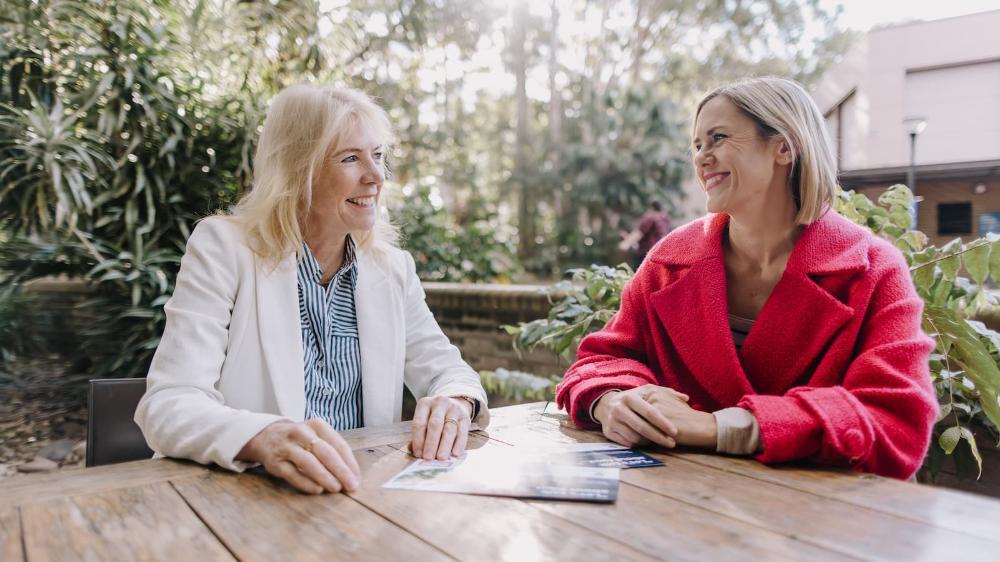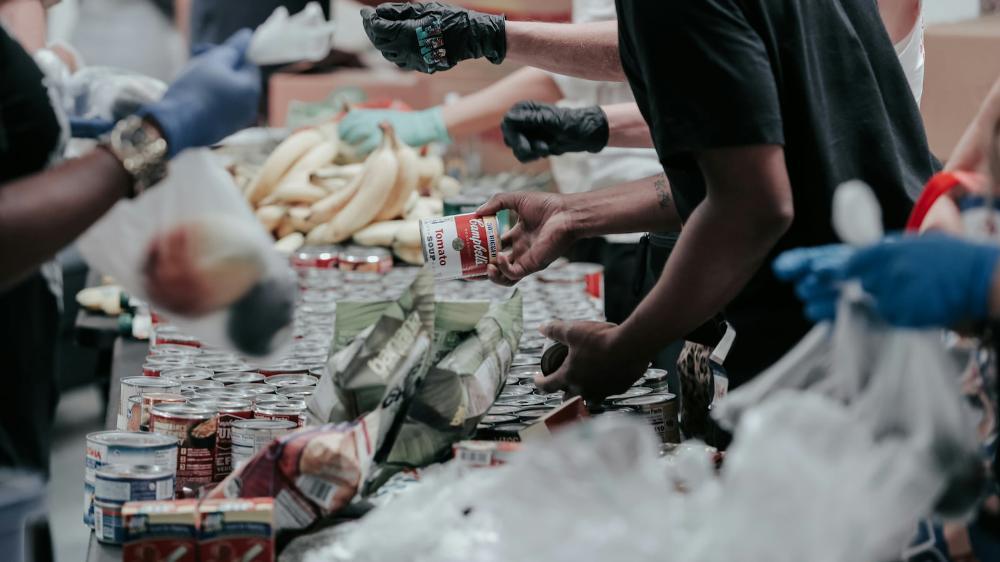Feeding the future
The role of emergency food relief in today's cost-of-living crisis
September 11, 2024
If you were struggling to feed your family, would you know how to access support?
Would you be able to find your local food bank? And would you feel comfortable accepting their help?
It is a uniquely modern problem that a country that produces more than enough food to feed its population is also one struggling with food insecurity. But two things can be true at once.
Australians waste 7.6 million tonnes of food each year, according to Food Bank, while at the same time, a rising number of people – approximately 3.7 million in 2023 - are unable to access healthy, nutritious and affordable food for their household.
The Let’s Talk About Food survey, a pioneering initiative from a team of University of Wollongong (UOW) researchers, is seeking to understand what food relief services are available in the Illawarra and Shoalhaven, and who is using them.
Spearheaded by Dr Katherine Kent and Professor Karen Charlton, from UOW’s Resilient and Sustainable Food Systems Research Group, the survey is the most comprehensive analysis of its kind, encouraging residents to speak up about their attitudes towards and access to food in the regions.
Approximately 10,000 households in the Illawarra and Shoalhaven have been randomly selected to receive the survey flyer in the mail. A social media campaign has also been launched, in conjunction with partner Healthy Cities Illawarra (HCI) and Food Fairness Illawarra.
What is food insecurity?
Food insecurity is one of the fundamental issues that the researchers are seeking to unravel. It is a human right, defined, by the Food and Agricultural Organization of the United Nations, as inadequate access to enough safe and nutritious food for healthy development and growth; essentially, not having enough food and not knowing where your next meal is coming from.
Food insecurity, Dr Kent says, goes hand in hand with understanding the landscape of food relief services. In the Illawarra, food relief services are scarce and often difficult for people to find.
“We don’t have great data on food relief in the Illawarra and Shoalhaven,” Dr Kent says. “Like the number of places that provide food relief, what types are available, the types and numbers of meals served, the kilograms of food saved from landfill. This is one of the driving forces behind the survey, as we can’t fix a problem without understanding it.”

Professor Karen Charlton and Dr Katherine Kent.
Kelly Andrews, CEO of Healthy Cities Illawarra (HCI), agrees and says that the data is critical in informing the work of the non-profit organisation’s Food Fairness initiatives.
“HCI has recently been awarded over $400,000 from the NSW Environmental Protection Authority for a three-year project aimed at increasing food donations across the region, which will help reduce food going to landfill and help increase the supply of food going to our community partners who provide food relief. Having quality data to help us design the systems and processes for this project will be invaluable.”
Set against the backdrop of the cost-of-living crisis, food relief services have been buckling under the weight of demand in the past few years. They are, as Dr Kent says, “under measured, under reported, and underfunded”. And the face of just who needs food relief is changing.
The changing nature of food insecurity
Whereas food insecurity was once considered the domain of those on little income or who were homeless, it has crept into the middle class, into households with working parents, and is affecting more and more children. This can take different shapes. It may mean an inability to feed the family, skipping meals and going hungry, reducing the quality and quantity of food purchased, or anxiety over being able to afford certain grocery items.
But that doesn’t mean that all those who need food relief are using it.
In the last few years, Dr Kent, alongside colleagues Dr Ami Seivwright, Dr Denis Visentin, and Ms Sandra Murray, all from the University of Tasmania, has been researching food insecurity on the Apple Isle in the wake of the COVID-19 pandemic.
Research from The Tasmania Project, as it is known, showed that while 10 per cent of respondents who needed emergency food relief, only four per cent chose to access it. Seeking to understand exactly who relies on food relief – such as community food stores, volunteer services, and food banks – and why is deeply complex and tied up with issues around shame, judgment, and vulnerability.
“Much of the feedback in our previous research was that people felt like they would be judged for using food relief services, particularly in small towns where everyone knows everyone. But lots of respondents were also not aware of the services that were available, and whether they would be eligible or not. There was always this notion that they shouldn’t access food relief services because others were worse off than they were and deserved those services more,” Dr Kent says.
“But when many of those accessed food relief services, three-quarters of respondents said it was a positive experience with kind staff who made the process less demeaning.
“The preliminary data from our ‘Let’s Talk About Food’ survey shows that only 10 per cent of residents think there is enough places where people can get support accessing food in their community. We need to raise awareness of the importance of these services to our communities.”
Desperate for more support
In the Illawarra and Shoalhaven, food relief services are struggling for resources, with a business model that relies on volunteers, food redistribution schemes, such as OzHarvest and Second Bite, and scraping bits of funding together from various grants.
Anecdotally, food relief services are screaming out for support and want to show just how many people in the community they help with the hopes of securing proper, ongoing funding. The Low Cost and Free Meals Directory is the most downloaded resource on the Food Fairness Illawarra website.
“The cost of living is not an issue that seems to be going away. The irony is that eating well, with healthy and nutritious food, and avoiding the discretionary foods such as biscuits, cakes, pastries and pies, as well as alcohol and take-aways is more affordable than the typical ‘unhealthy’ Australian diet that is currently consumed. It is in everyone’s best options to create a society where fresh fruits and vegetables, and quality protein and dairy is cheap and plentiful. And where people have the tools they need, in terms of money as well as cooking skills, to put good meals together for their family.
“We must also to remove the shame and stigma around accessing food relief resources, so there is no barrier if people do need to rely on that.”
How to help those in need
Professor Charlton says more could be done by local councils, if mandated by state and federal government policy to increase access for people in our communities that are struggling to afford life’s basic essentials.
Innovative solutions could include income-generating programmes, subsidised low-cost grocery stores, free school meals, and incentives to grow more food locally. Ultimately, we should be living in a society where no one needs to rely on emergency solutions such as those provided by food relief agencies.

“It is vital that we support the services that are in operation with proper funding, infrastructure and resourcing. We can’t continue to rely on the goodwill of volunteers,” Professor Charlton says.
“Nationally, there is sustained demand for the development of a comprehensive national food policy. A specialised government department, equipped with a wide range of interventions, is essential to address food-related issues effectively, now and into the future.
“Currently, the government's approach to food insecurity often relies on increasing funding for emergency food relief. However, this solution only provides temporary relief and fails to address the root causes of food insecurity, much like applying a band-aid to a deeper problem.”
This sentiment is echoed by Ms Andrews from HCI.
“Health inequity and poor health outcomes don’t have just one cause – they are many, complex and inter-related and require a long-term approach to changing the very systems that operate in an unsustainable and unhealthy way. We will continue to work in partnership with UOW towards a stronger local food system to favour local production, decrease food waste and increase community access to fresh, healthy and affordable food; but our constant challenge is funding.”
Dr Kent and Professor Charlton are encouraging residents aged 18 and over to take part in the online survey. Many will have a postcard-sized invitation with a QR code sent directly to their home. All other residents can access the survey by going to uow.info/food, or through Healthy Cities Illawarra website and social media platforms.
For more information or to fill out the survey, visit uow.info/food
About the research
The Let’s Talk About Food survey is a partnership between the Resilient and Sustainable Food Systems Research Group at the University of Wollongong, Healthy Cities Illawarra, and Food Fairness Illawarra.
The Resilient and Sustainable Food Systems Research Group focuses on collaborative research for a sustainable food system that is good for both human and planetary health.